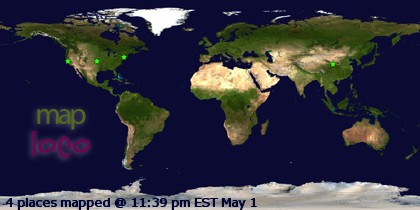We picked up our new travellers this morning (two Brits on the last leg of a year-long round the world journey), and were on the road by 8:15. The mountains surrounding Windhoek were kinda nice…
 |
| Rolling hills that look interesting |
…but soon we were on a high endless arid plateau.
 |
| Ah. It's flat again |
At times it got a little greener…
 |
| Pretty rangeland |
…but mostly as we worked our way west towards the Kalahari desert, it just got flatter and flatter, and shrubbier and shrubbier.
 |
| The busy highway |
 |
| Laban & Rimson seeing who's faster |
 |
| A lake -- a LAKE -- near Gobabis |
 |
| The vastness of the Kalahari |
Our big stop for the day was Gobabis, which features some Herero tribe and some San tribe members.
 |
| Love Herero headresses |
 |
| The colours they choose are nice, too |
 |
| The idea of long dresses in the desert is interesting |
 |
| And capes. Did I mention capes? |
We crossed into Botswana and lost an hour (Namibia does daylight savings time).
 |
| Normally, you can't tae pictures at Border posts, but they said this was OK |
Then it was just 3 more hours of slogging down a paved road with little more than the odd baboon for interest until we arrived at Ghanzi, our home for the night, where we arrived just after sunset.
 |
| Typical beautiful African sunset |
We pulled in at 6:40 PM and had a 7 PM dinner call. Where we are staying, Ghanzi Trail Blazers, is a San bush camp themed lodge. There’s only solar electricity during daylight hours, and a generator until 10 PM and from 5 AM to sunrise. Hot water is provided in a central boiler heated by a wood fire (biomass heating is WAY worse for the environment from a CO2 perspective than gas or oil, by the way -- but then there is no gas here). Hot water is only available from about 6 AM to about midnight. Bathrooms are private but lack a roof; you can sit on the john and watch stars – but they’re a might bit cold given that it was 6° at 10 PM tonight.
 |
| John & shower... |
 |
| The view from the shower. Note the "no roof" |
After a typical African meal of pap and beef stew, we were entertained by San bushman dancing.
 |
| Staying warm by the fire |
 |
| Acacia seed pods as rattles on their legs |
 |
| Snake hunting |
 |
| Celebrations |
It was virtually identical to the North American First Nations dancing that you see where I live, though not as colourful. Since I’m not into that, I didn’t find the chanting and foot stomping that interesting.
=================
Today’s Africa Travel Tip: Long rides
Pull out a map of most any African country and they look fairly small. However, this is deceiving. For instance, both Namibia and Botswana are each about the size of France. My safari covers over 5,600 km, kinda like driving from Vancouver to Halifax. So there are some long distance days on safari. What to do on a day-long truck ride?
Well, the primary winner is the iPad. All but 5 people on my safari have them. They read e-books; look at, take and edit photos; play games; write e-mails for later sending; track the route on maps; and listen to music. Everyone who has one raves about it as a godsend to travellers. I somehow ended up doing IT support for all the iPads.
The second most popular pastime is sleeping. We have early starts and late finishes, and the scenery isn’t always stunning (mostly yes, but oftentimes not).
Third is looking out the window. Often, there are animals to try to spot, interesting farms, cool birds, neat mountains, striking landscapes, fascinating towns and villages, and unique signs.
There are a few pencil and paper game players, but that’s tough on a truck bouncing around on bumpy roads with the windows wide open and 2 x 60 air conditioning working full force, as is playing cards.
Some people don’t appear to do anything. That seems strange to me. Others read paper books, magazines, or newspapers they have purchased, but the general consensus from the travelers who do this a lot is the iPad is easier, lighter, and more versatile than lugging magazines and books.
But come prepared to cross vast plains of widely spaced, 10’ tall trees and bushes that goes on for hours and hours, like those on the Windhoek to Ghanzi run, that block views of any animals or terrain.


No comments:
Post a Comment